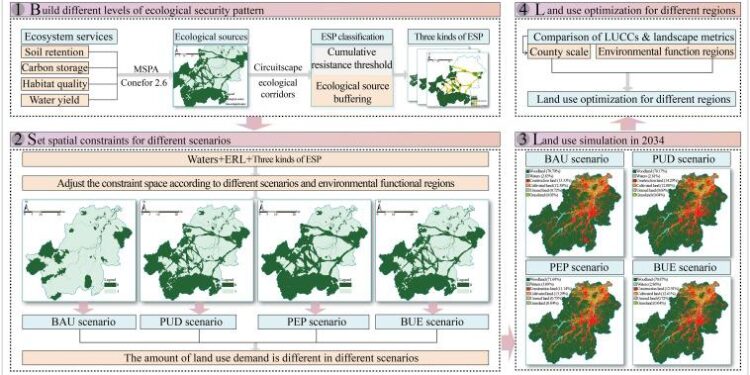Reimagining Business Strategies in the Face of Climate Change
As the effects of climate change intensify, organizations are compelled to reevaluate their environmental strategies. A surge in ecological challenges, including severe weather patterns and evolving regulatory landscapes, is driving leaders across diverse sectors to rethink their sustainability initiatives. Fast Company delves into how executives are embracing adaptive management techniques and pioneering solutions to navigate risks while capitalizing on opportunities within a turbulent climate context. This transformation not only signifies an increasing acknowledgment of environmental accountability but also highlights the critical need for proactive strategies that can protect organizational futures while fostering a healthier planet.
Strategic Adaptations in Response to Climate Change
With the ongoing ramifications of climate change becoming more apparent, business leaders are increasingly urged to innovate their strategic frameworks to tackle new environmental threats. Embedding sustainability into fundamental business practices has emerged as a key focus area, prompting companies to implement circular economy principles, decarbonization efforts, and responsible resource utilization. This shift not only reduces ecological footprints but also aligns businesses with rising consumer expectations for sustainable practices. Stakeholders—including investors and customers—are demanding greater transparency regarding environmental impacts, creating significant pressure across various industries.
To enhance adaptability, management teams are utilizing sophisticated data analytics and climate modeling technologies that aid in forecasting potential disruptions and informing decision-making processes. Essential elements influencing managerial approaches include:
- Risk Evaluation: Identifying weaknesses within supply chains and operational frameworks.
- Sustainable Investment: Focusing resources on green technologies.
- Civic Engagement: Partnering with local communities and environmental groups.
Additionally, numerous organizations are forming dedicated sustainability units tasked with navigating these complexities—ensuring that ecological considerations permeate all levels of decision-making. The dialogue is shifting from merely addressing risks towards actively leveraging sustainability as a competitive edge in an ever-changing market environment.
Integrating Ecological Considerations into Business Strategies
The visible consequences of climate change compel business leaders to critically evaluate their operational models. Incorporating ecological risks into business strategies involves not just damage control but also proactively seeking avenues for sustainable growth. Companies increasingly recognize that ecological factors once viewed as external challenges have become integral components of strategic planning processes.The evolution of risk assessment tools, which now encompass variables like resource depletion, loss of biodiversity, and shifts in regulations requiring immediate attention from management teams allows firms to create sustainable frameworks, prioritizing long-term viability over short-term profits.
This paradigm shift encourages businesses to adopt innovative methodologies that weave sustainability into their core missions effectively navigating the intricacies associated with ecological risks through:
- Cultivating a Sustainable Culture: Instilling an ethos prioritizing environmental responsibility at every organizational level.
- A Data-Centric Approach: Utilizing analytics for assessing potential ecological impacts while predicting future risks.
- Civic Collaboration:Create partnerships with communities and suppliers aimed at establishing shared visions for sustainability initiatives.
< li >< strong > Embracing Circular Economy Principles: Reducing waste by designing products intended for durability or reuse.
Ecological Challenges Business Consequences Resource Depletion Rising costs along with supply chain interruptions
< tr >< td > Loss Of Biodiversity
< td > Damage To Reputation And Loss Of Market Access
< tr >< td > Regulatory Shifts
< td > Compliance Expenses And Operational Limitations
Collaborative Engagement for Sustainable Solutions
Acknowledging escalating climatic threats prompts managers increasingly recognizing the value of engaging diverse stakeholders throughout decision-making processes. Collaborative methods not only strengthen eco-friendly strategies but also foster collective ownership among communities, enterprises, and governmental entities alike; tapping into varied insights leads organizations toward more innovative solutions tailored toward resilience against changing conditions.
Key aspects contributing towards successful stakeholder engagement include:- < strong > Open Communication: Facilitating transparent discussions among stakeholders helps identify unique vulnerabilities alongside strengths.
- < strong > Common Objectives: Establishing unified goals aligning interests fosters commitment across all parties involved.
- < strong > Education Initiatives: Raising awareness about climatic scenarios enhances proactive responses among stakeholders.
Applying these collaborative tactics can significantly bolster community resilience against climate-related adversities; one recent initiative involved coastal fishermen collaborating alongside scientists plus policymakers developing sustainable fishing protocols showcasing interdisciplinary cooperation’s potential yielding immediate benefits while empowering locals advocating continued stewardship over natural resources.
Tracking effectiveness through transparent metrics ensures ongoing improvement highlighted below:
Stakeholder Type
Role Impact
< / th >
< / th >Local Communities Directly Implementing Changes Enhanced Local Knowledge Plus Commitment
< / th >Scientists Providing Expertise Alongside Research Informed Decision-Making Backed By Data
< / th >






























